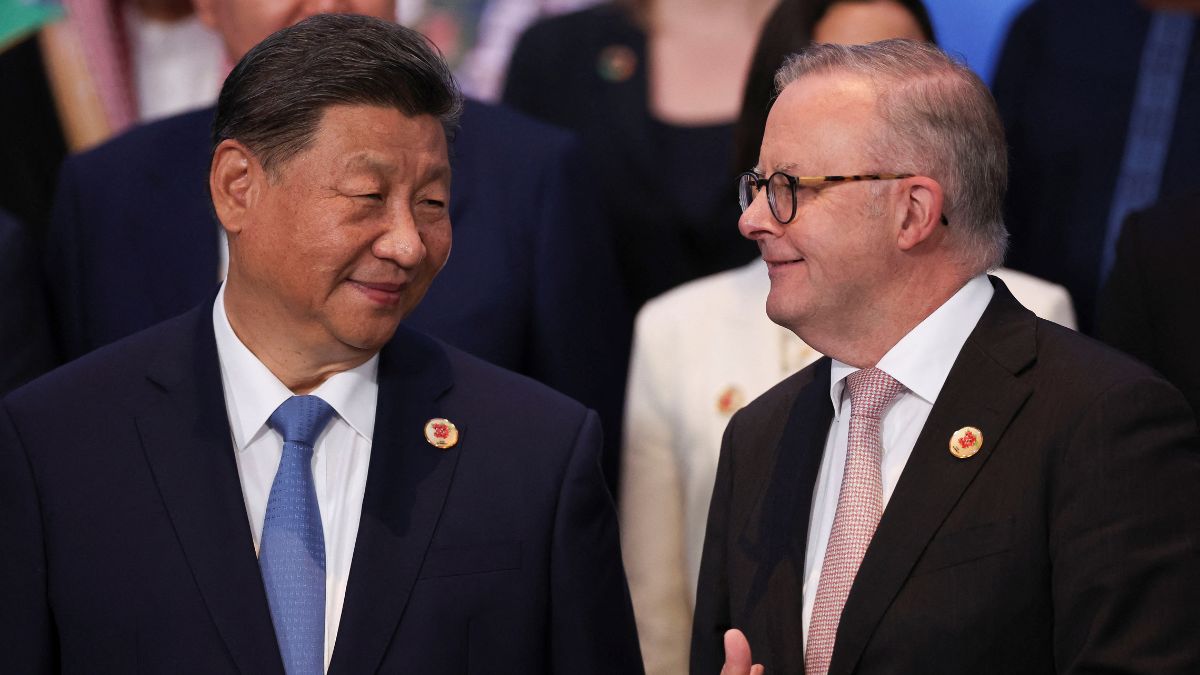) |
| Australia's Prime Minister Anthony Albanese and China's President Xi Jinping |
📰 Overview
As Australia approaches its 2025 federal election, both the Labor and Liberal parties are amplifying their efforts to engage Chinese-Australian voters through popular Chinese social media platforms, WeChat and RedNote (also known as Xiaohongshu). This strategic move comes in response to the significant influence of Chinese-Australian communities in several marginal electorates.Reuters
In the 2022 election, the Liberal Party experienced notable losses in electorates with substantial Chinese-Australian populations, partly due to perceptions of anti-China rhetoric. To counter this, the party is now actively campaigning on Chinese platforms, with candidates like Scott Yung in Bennelong and Gisele Kapterian in Bradfield leading the charge. Yung has appeared in over 100 authorized ads on WeChat since January, aiming to reconnect with voters in his constituency, where approximately 30% of residents have Chinese heritage. ABC+2The Guardian+2news+2Time+3ABC+3The Guardian+3
Labor, on the other hand, is utilizing the influence of figures like Foreign Minister Penny Wong to appeal to Chinese-Australian voters. Wong has been active on Chinese social media, addressing concerns and highlighting the party's commitment to multiculturalism and inclusion. Reuters+4The Australian+4The Guardian+4
📱 The Role of WeChat and RedNote
WeChat and RedNote have become essential tools for political engagement within Chinese-Australian communities. These platforms allow parties to share tailored content, from policy discussions to lifestyle-oriented posts, resonating with the cultural values and interests of their target audience.9News+2ABC+2Time+2
However, the use of these platforms is not without challenges. Researchers have identified a surge in disinformation on WeChat and RedNote, with misleading narratives targeting Chinese-Australian migrants. Posts have falsely claimed policy changes leading to mass deportations, exploiting fears within the community. Such disinformation campaigns are often commercially driven, aiming to manipulate public opinion for profit. 9News+1ABC+1
🗳️ Implications for the Election
The intensified focus on Chinese-Australian voters underscores their potential to influence the election outcome, especially in closely contested seats like Bennelong and Bradfield. Both major parties recognize the importance of this demographic and are tailoring their strategies accordingly.news+5The Guardian+5Time+5Reuters+6Time+6The Australian+6
Labor's engagement with community leaders and participation in cultural events aim to reinforce trust and solidarity. Meanwhile, the Liberal Party is attempting to rebuild its relationship with Chinese-Australian voters by emphasizing shared values and addressing past grievances.
As the election approaches, the effectiveness of these outreach efforts will be closely watched, with the Chinese-Australian vote potentially playing a pivotal role in determining the next government.
